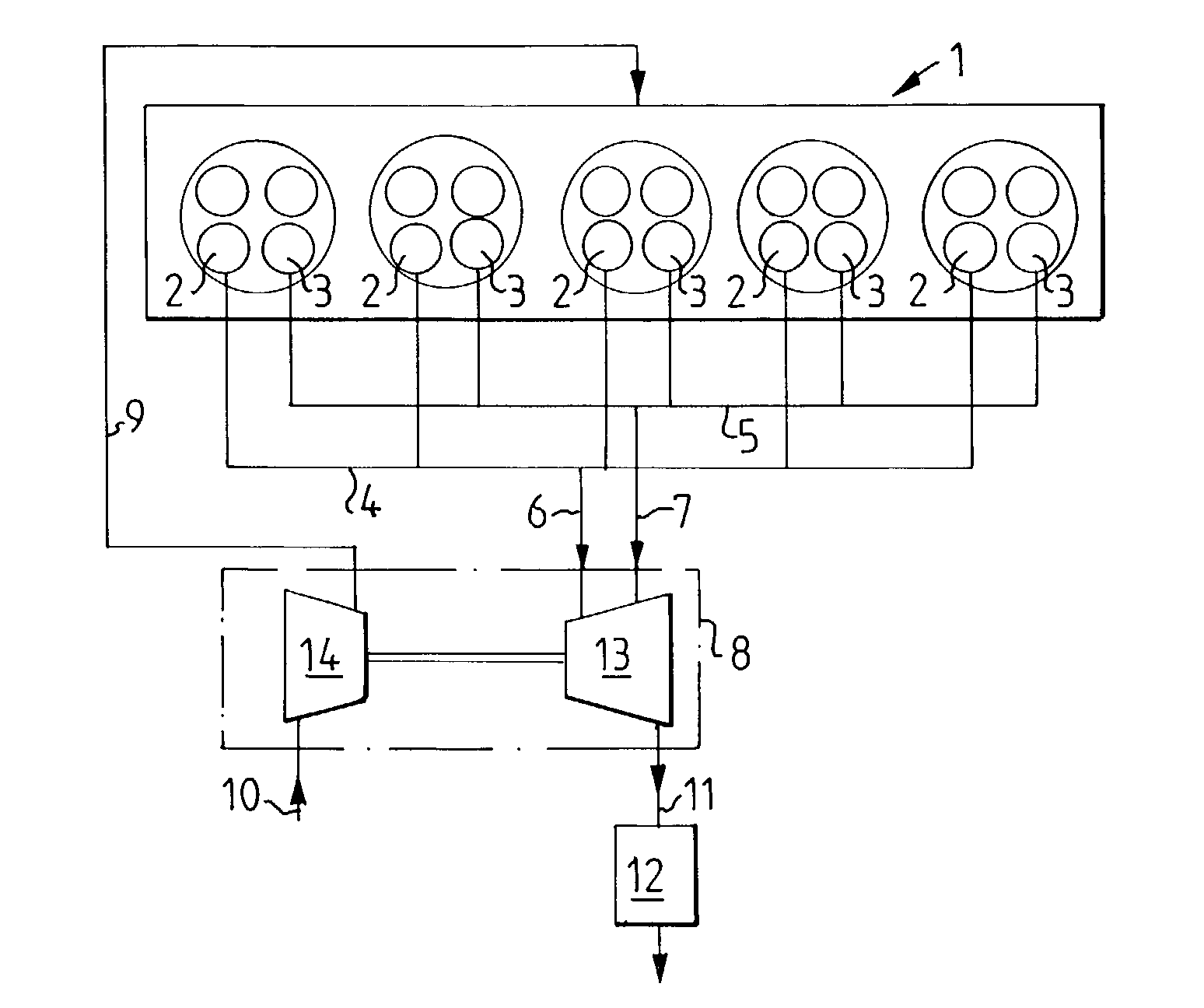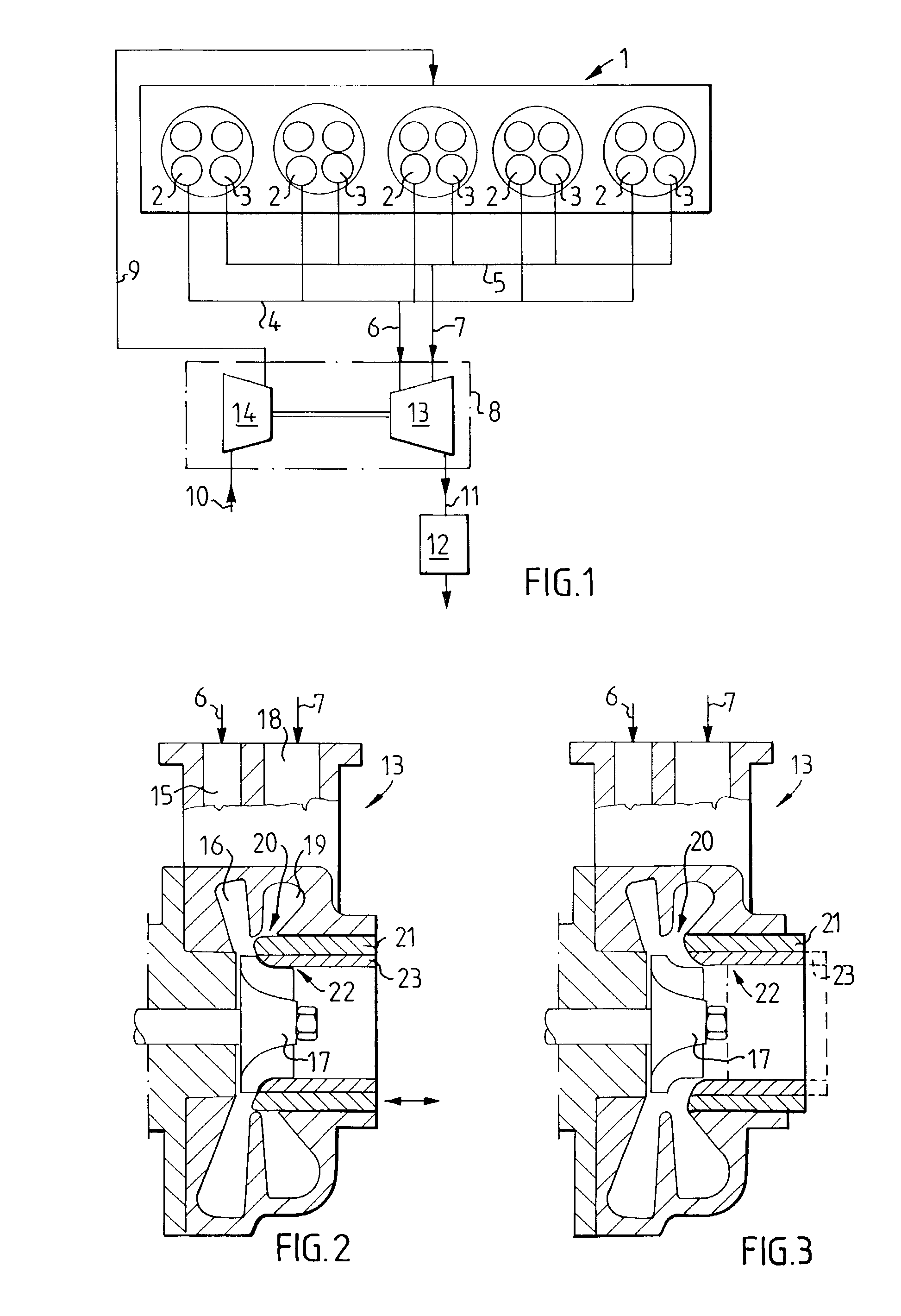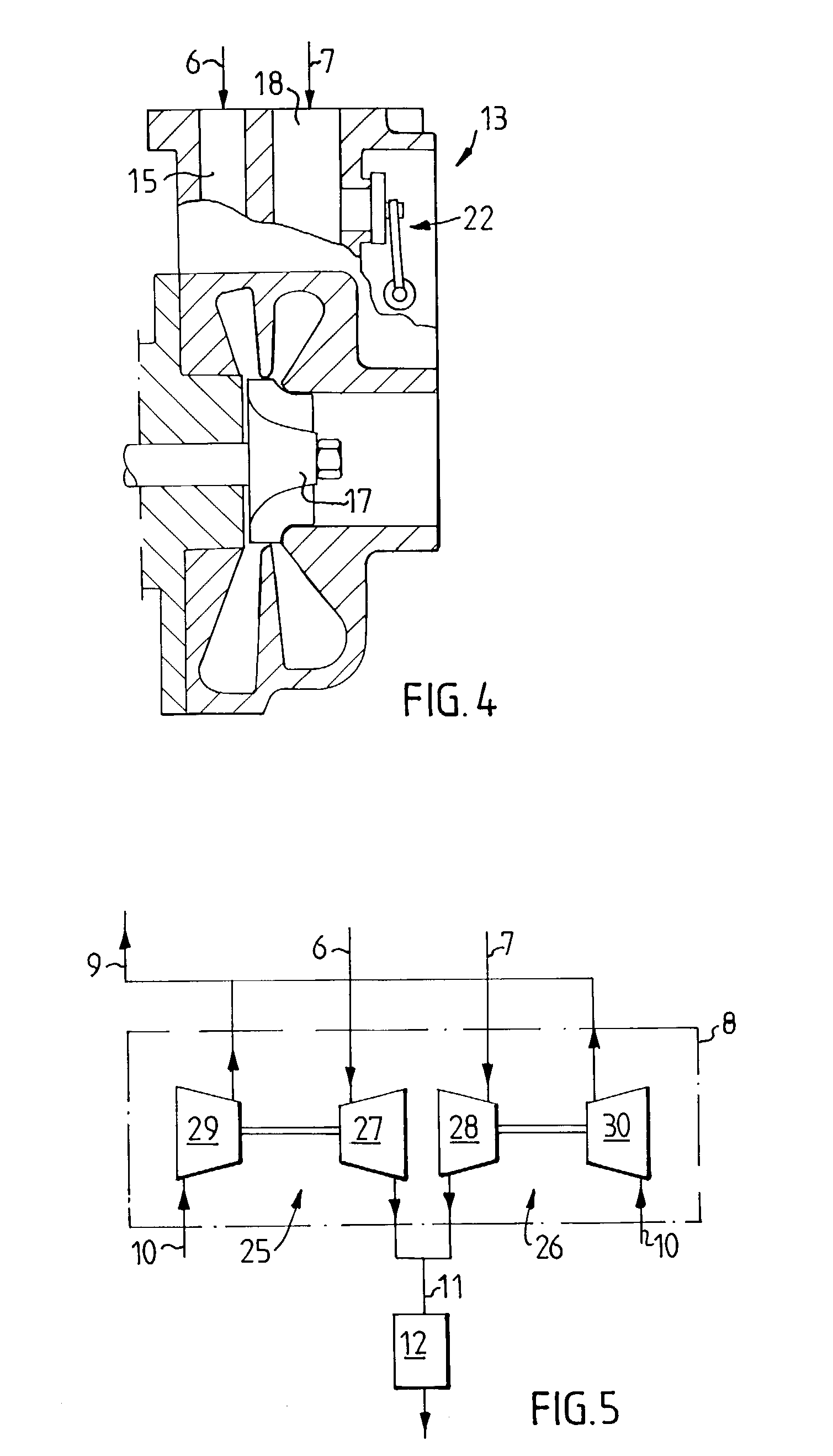Method for driving an internal-combustion engine and an internal-combustion engine
a technology of combustion engine and combustion engine, which is applied in the direction of machines/engines, output power, electric control, etc., can solve the problems increase the complexity of the turbine, and affect the efficiency of the turbo compressor, so as to improve the exhaust gas delivery and solve the problem of small exhaust gas flow
- Summary
- Abstract
- Description
- Claims
- Application Information
AI Technical Summary
Benefits of technology
Problems solved by technology
Method used
Image
Examples
Embodiment Construction
[0018] FIG. 1 shows in diagrammatic representation an Otto-type multi-cylinder internal-combustion engine 1 realized according to the invention. The engine cylinders each have at least two exhaust-gas valves 2, 3, in which a first exhaust-gas valve 2 in each cylinder is connected to a first exhaust manifold 4, and in which a second exhaust-gas valve 3 in each cylinder is connected to a second exhaust manifold 5. The two exhaust manifolds 4, 5 emerge via respectively a first exhaust-gas pipe 6 and a second exhaust-gas pipe 7 into a supercharger 8, by means of which charge air is fed to the engine 1 via an air pipe 9 in a known manner (not shown here in greater detail). The supercharger 8 driven by exhaust gases from the engine is provided with air via an inlet 10 and has an exhaust-gas outlet 11 intended for the exhaust gases, whence the exhaust gases are led away from the engine in the conventional manner via a catalyser 12 and other conventional components (not shown here in greate...
PUM
 Login to View More
Login to View More Abstract
Description
Claims
Application Information
 Login to View More
Login to View More - R&D
- Intellectual Property
- Life Sciences
- Materials
- Tech Scout
- Unparalleled Data Quality
- Higher Quality Content
- 60% Fewer Hallucinations
Browse by: Latest US Patents, China's latest patents, Technical Efficacy Thesaurus, Application Domain, Technology Topic, Popular Technical Reports.
© 2025 PatSnap. All rights reserved.Legal|Privacy policy|Modern Slavery Act Transparency Statement|Sitemap|About US| Contact US: help@patsnap.com



